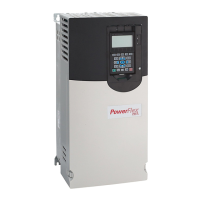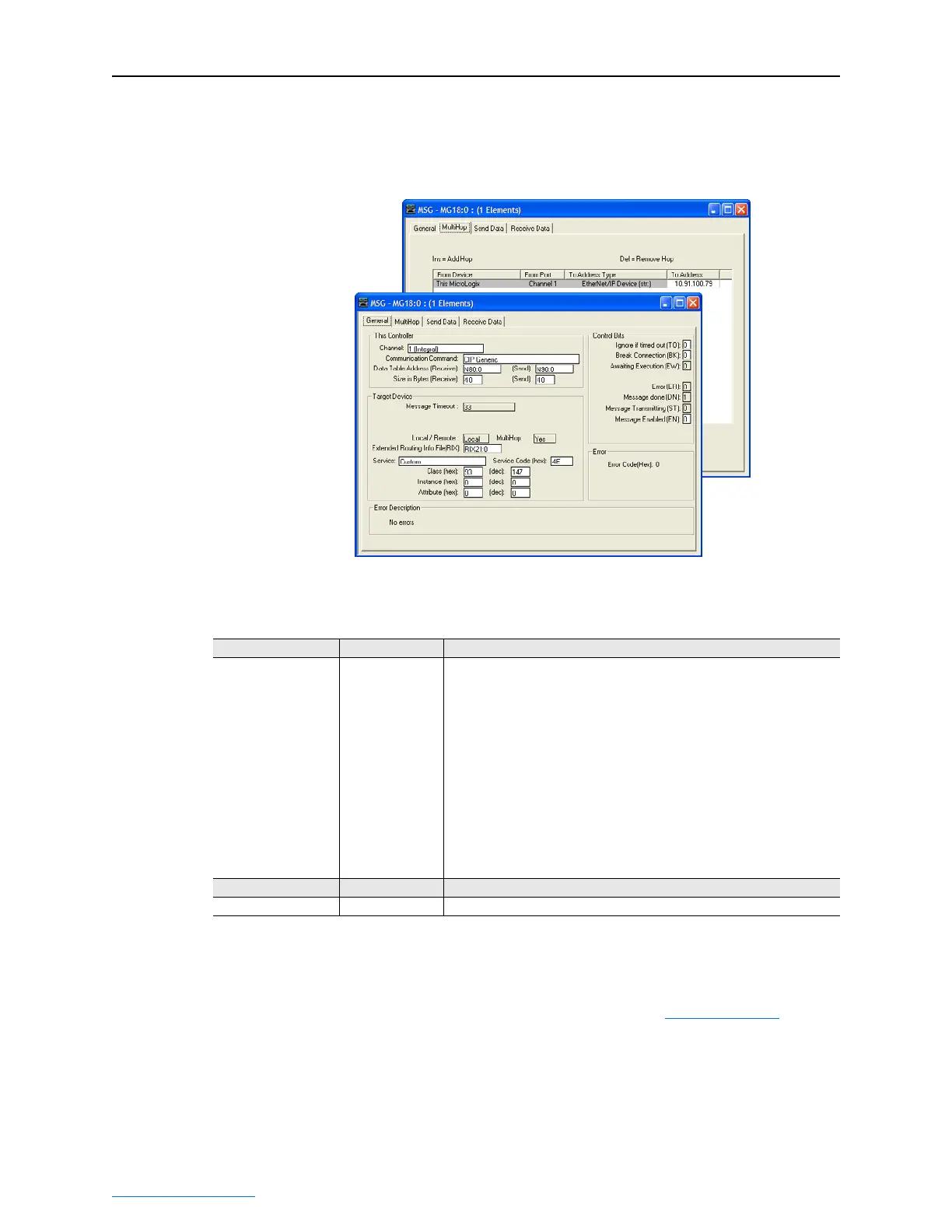6-40 Using Explicit Messaging
PowerFlex® 755 Drive Embedded EtherNet/IP Adapter User Manual
Publication 750COM-UM001A-EN-P
MicroLogix 1100 – Formatting a Message to Write Multiple
Parameters
Figure 6.48 Custom Scattered Write Multiple Message Configuration Screens
The following table identifies the data that is required in each box to
format a multiple write message.
General Tab Example Value Description
Channel
Comm… Command
Data Table Address
Receive
Send
Size in Bytes
Receive
Send
Extended Routing…
Service
(1)
Service Code
Class
Instance
Attribute
1
CIP Generic
N80:0
N90:0
40
(2)
40
(2)
RIX21:0
Custom
4E (Hex.)
(3)
93 (Hex.)
0 (Dec.)
0 (Dec.)
Controller port to which the EtherNet/IP network is connected.
Used to access the Parameter Object in the adapter.
An unused controller data table address containing the message instruction.
This address is the starting word of the response file.
This address is the starting word of the request file.
Each byte size is an 8-bit integer.
Number of bytes to be received.
Number of bytes to be sent.
An unused routing information file for the controller.
Required for scattered messages.
Code for the requested service.
Class ID for the DPI Parameter Object.
Required for scattered messages.
Required for scattered messages.
MultiHop Tab Example Value Description
To Address 10.91.100.79 IP address of the adapter connected to the drive.
(1)
The default setting for Service is “Custom,” enabling entry of a Service Code not available from the Service pull-down menu. When
selecting a Service other than “Custom” from the pull-down menu, an appropriate Hex. value is automatically assigned to the Service
Code box which grays out (unavailable).
(2)
In this example, we are writing to five 32-bit REAL (floating point) parameters. Each parameter being written to requires four contiguous
16-bit words. Scattered write messages always assume that every parameter being written to is a 32-bit parameter, regardless of its
actual size. Therefore, the Size in Bytes must be set to 40. The data structure format is shown in Figure 6.52 on page 6-43
. Maximum
length is 128 words (256 bytes), which equates to 32 parameters.
(3)
Service Code 4E write messages are written to the drive’s Non-Volatile Storage (EEPROM) memory, so the parameter value will remain
even after the drive is power cycled. Important: Be very cautious as the EEPROM may quickly exceed its life cycle and cause the drive
to malfunction.

